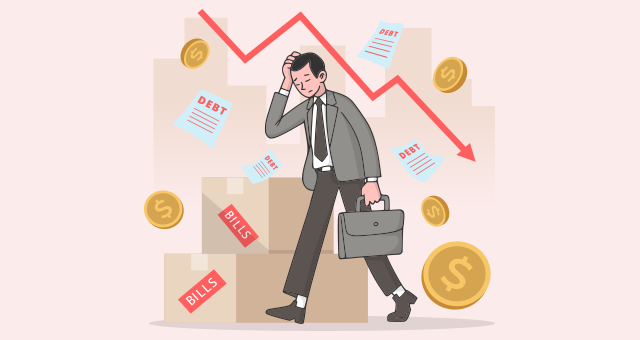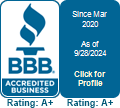
Three Things You Can Work Out With Your Credit Card Company When In Financial Trouble
The end of the month has arrived, which means it is time to pay the bills. You look at your credit card statement and discover that you can only afford the minimum payment once more.
You are not alone majority of American consumers share this plight. According to data from Experian, the average credit card balance in the US for Q3 2022 is around $6,004.
The good news is that you can reduce your credit card debt by negotiating with your credit card company. This guide will help you know how to negotiate, the different settlement options, and whether it is right for you.
Can You Negotiate Credit Card Debt?
You might think that credit card companies will not negotiate with you. This is not the truth. Getting in touch with your issuer might lead to a win-win outcome.
One of the first things to remember is that credit card debt is unsecured, so if you do not pay, a creditor cannot seize your assets. Therefore, the credit card company’s priorities may change if you fall behind on your bill. To recover as much money as possible your creditor may be prepared to negotiate a settlement or other type of agreement. Talk to lenders about your financial situation and ask them if they will offer you any concessions because you would not be able to fulfill your initial obligation.
Credit card companies may also be willing to compromise to maintain a long-term relationship with you or prevent you from missing payments and have the incentive to keep you as a client.
The Three Types of Credit Card Debt Settlement Plans You Can Negotiate
Different strategies exist for paying off your credit card debt for less than what you owe. Here are the three plans that are most likely to be accepted by card issuers. The one that is best for you will depend on your financial situation.
1. Workout Agreement
Renegotiating the terms of your credit card repayment to make it simpler to pay off your card gradually is known as a payoff plan or workout agreement. As part of your agreement, your creditor may agree to waive late fees, lower your interest rate, or lower the monthly payment required. In return, you would typically have to agree to adhere to a predetermined payment schedule.
It is a good option if you can afford to pay some of your balance off each month but not all of it. It will enable you to repay your debt at a pace that is manageable for you.
However, as per your contract, your card issuer may close your credit card account, which could lower your credit score. Because closing one of your cards will increase your debt-to-credit ratio, which is penalized by the two main credit scoring models (FICO and VantageScore).
2. Hardship Program
If your financial setback is brief, a hardship agreement, also known as a forbearance program, might be an option. You should contact your card issuer right away to inquire about any hardship programs available if you were to suddenly lose your job, suffer an unexpected illness, or sustain an injury.
Like workout agreements, hardship programs may allow you to skip some payments, have your interest rate reduced, or stop charging you late fees. The main difference is that they are short-term. Within a few months, your loan’s regular terms will return.
A structured payment plan is usually included in this plan. Numerous credit card companies offer hardship programs but are rarely advertised(as creditors do not want too many people taking advantage of programs that allow them to pay less than they otherwise would have to).
Call your credit card company and enquire about their hardship program, if any, and the requirements for enrollment to see if this is an option.
3. Lump-Sum Payment Arrangement
In this situation, you bargain with the credit card company to make a one-time payment that is less than what you owe. For instance, you might have a credit card balance of $4,000 after charges, interest, and fees. But you ask the bank to accept only $2,500 (your original credit limit) as payment to settle the account in full. If the credit card issuer agrees, then the remaining will be waived.
Of course, this option is only viable if you have the money to cover the payment. You can use it to make a one-time payment in exchange for the full remaining balance’s forgiveness if you get a bonus at work, receive an inheritance, or are willing to use money from your savings.
There are two potential drawbacks to lump-sum settlements. First, a note indicating that the account was “settled for less than the full balance” might be added to your credit report. Your credit score might suffer as a result. However, if your account is already past due the notation may not impact your credit score. Secondly, you might need to report the debt forgiven as income on your upcoming tax return and may need to pay taxes on that sum.
Steps to Negotiate Credit Card Debt
The five steps listed below will help you achieve your goals if you decide to negotiate with your credit card company on your own.
1. Calculate your debt.
Check your account online or by calling your bank directly to find out your outstanding balance before taking any further action. Checking the interest rate on your debt is also important. When negotiating, you must be prepared with these figures.
2. Think about your options.
Determine which option makes the most sense for your financial situation: a lump sum settlement, a workout arrangement, or a hardship program.
Consider what you require; if all you want is a short-term support while you get back on your feet, a hardship program or workout agreement may be adequate. On the other hand, if you want to be debt free and can tap into some funds, a lump sum settlement may be a better option.
3. Contact your credit card provider.
It is time to call your card issuer once you have gathered all the necessary data. For example, a debt relief or hardship representative of the company should be the person you should speak with to ensure they have the authority to approve your request.
Inform them of your financial hardship, ask about the debt settlement procedure, and outline your plan for getting through it.
4. Be persistent and take detailed notes.
Being polite and firm is essential when dealing with the authorities. It takes a lot of negotiating skills. If the first conversation does not go as you wanted, be persistent. These discussions frequently take a while.
Make sure to note every conversation’s specifics, including keeping a record of the times and dates of your conversations, and also note down the full names and positions of everyone you speak with.
5. Request a written agreement.
There is no assurance that your lender will fulfill their end of the bargain if they haven’t provided you with a written agreement outlining your agreement; a verbal offer is insufficient. So, if you can successfully negotiate your debt, ensure to put everything in writing. You can always refer back to your agreements if something else comes up. Make sure you are familiar with and accept the new conditions.
Should You Negotiate Your Credit Card Debt?
Negotiating credit card debt can be a good solution if you cannot make your payments as agreed. If there are any better options, you should carefully consider them. Negotiating a debt should be done with an awareness of the potential consequences for your credit and an open mind. That way, you can decide what is best for you after doing your research.
If you are not confident that you can negotiate a settlement with your credit card company and wish to explore other alternatives contact our credit counseling experts. They are trained in consumer credit and can create a personalized debt consolidation or a settlement plan to address your credit card debt issues.


